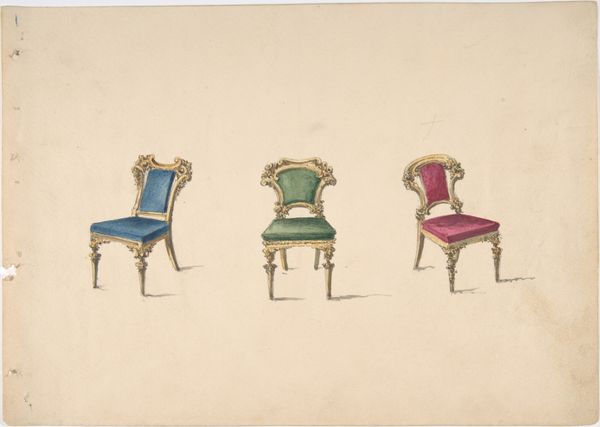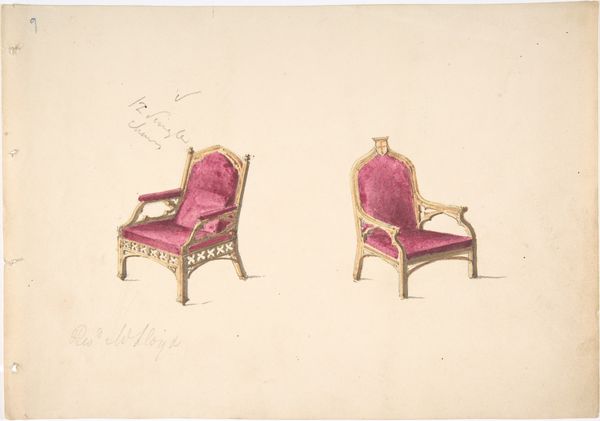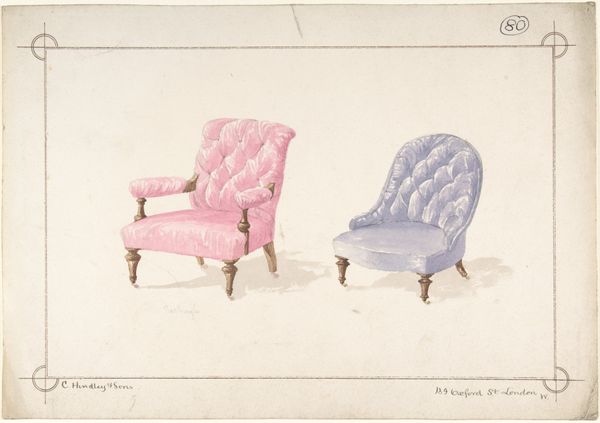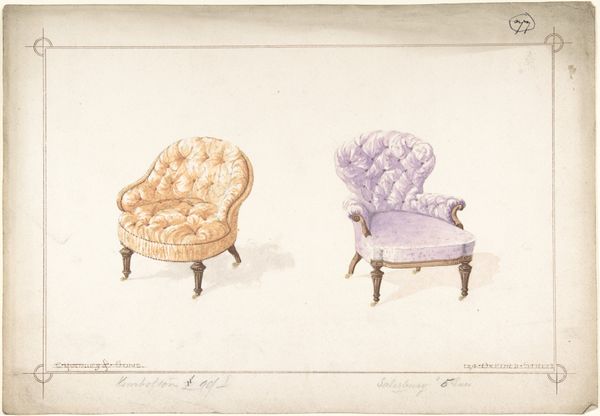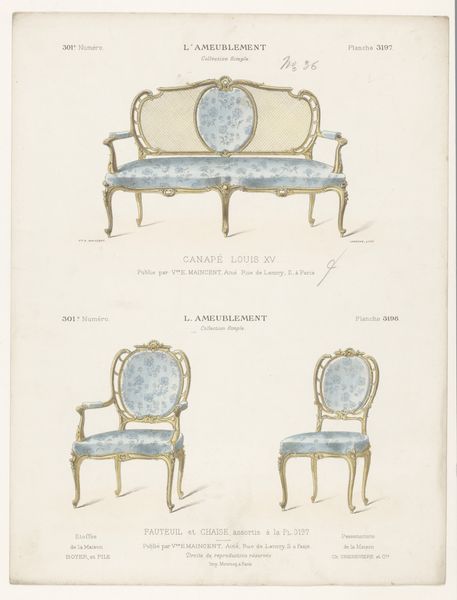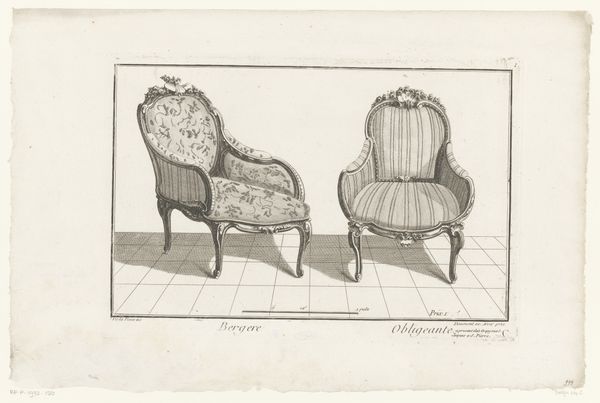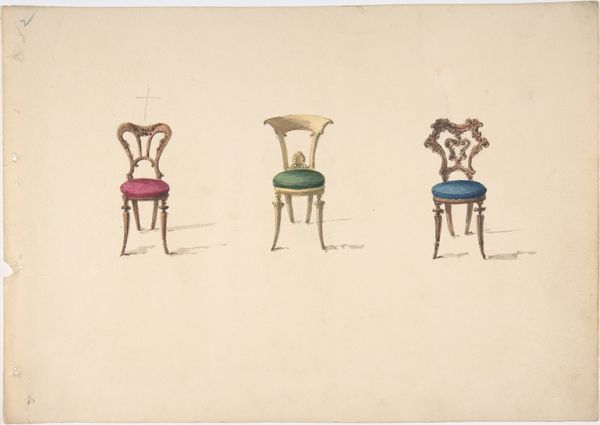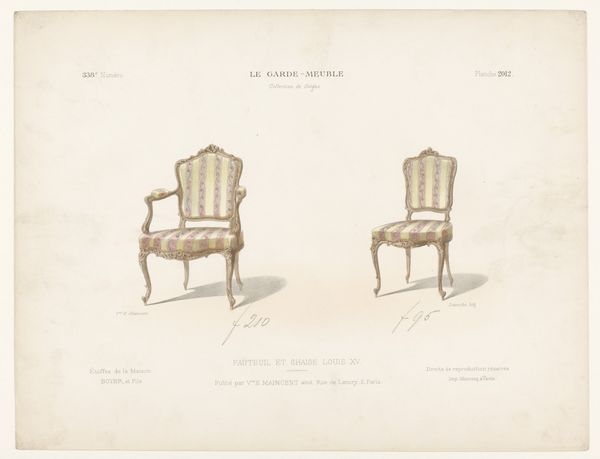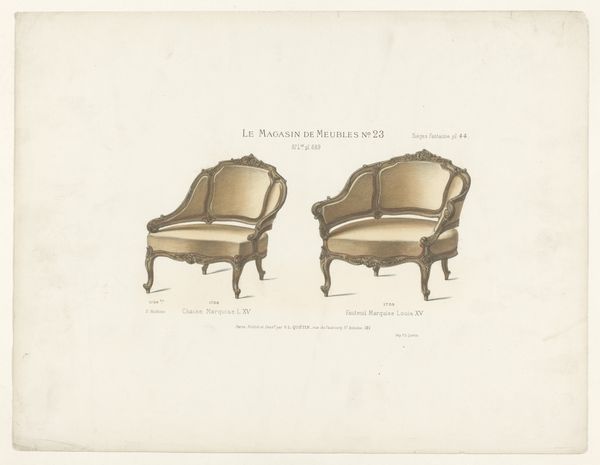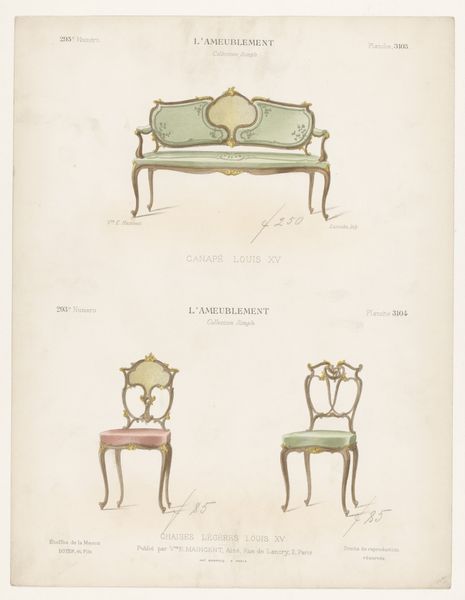
Design for Drawing Room Chairs, Louis Quinze Style 1835 - 1900
0:00
0:00
drawing, mixed-media, coloured-pencil, print, watercolor, ink
#
drawing
#
mixed-media
#
coloured-pencil
# print
#
watercolor
#
ink
#
classicism
#
watercolour illustration
#
decorative-art
Copyright: Public Domain
Curator: Well, what catches your eye first about this design? It's called "Design for Drawing Room Chairs, Louis Quinze Style" by Robert William Hume. Editor: Immediately, a feeling of delicate impracticality. They’re pretty, almost like confections, but I can't imagine sinking into one for a serious conversation or even a nap! Curator: Hume created this sometime between 1835 and 1900. He employed ink, watercolor, colored pencil, and print on drawing to envision these chairs. Note how the Louis Quinze style invokes a sense of aristocracy, of powdered wigs and perfumed rooms. The chairs themselves, objects of status, are also symbols of leisure and perhaps even a certain kind of cultivated ennui. Editor: Yes! They're absolutely stage props, aren't they? Like they belong in a play where everyone’s being witty and miserable at the same time. The pastels amplify that – the baby blue and blush pink feel so carefully chosen to project a certain…refined unhappiness? Curator: Exactly. The choice of pastels serves a dual purpose. Visually, it aligns with the Rococo aesthetic of Louis Quinze, with its emphasis on light, delicate colors, while emotionally it hints at fleeting beauty and a fragile social order, ideas about ephemeral status which I suspect appealed to later audiences. It's fascinating how an object, seemingly so simple, can carry such a weight of cultural and psychological meaning across time. Editor: And the symmetry of the design, the mirroring of the two chairs – it feels almost…clinical? As if Hume is presenting them as specimens for examination. Two different possibilities of an ideal, a suggestion of luxury? Curator: Perhaps a little cataloging of possibility indeed, almost like collecting butterflies, to pin them down, understand their patterns, their variations, their place in a bigger…taxonomy of style and wealth, something not entirely divorced from the rise of positivism, or indeed imperialism at the time of its creation. Editor: I see that, though my takeaway will always remain focused on these pretty objects themselves, symbols of comfort rendered cold by the passage of time. I can’t decide if that’s lovely or simply melancholy. Curator: Maybe the question isn't to decide but to ponder that ambivalence a little bit more, in relation to beauty and obsolescence? It's something to consider.
Comments
No comments
Be the first to comment and join the conversation on the ultimate creative platform.
